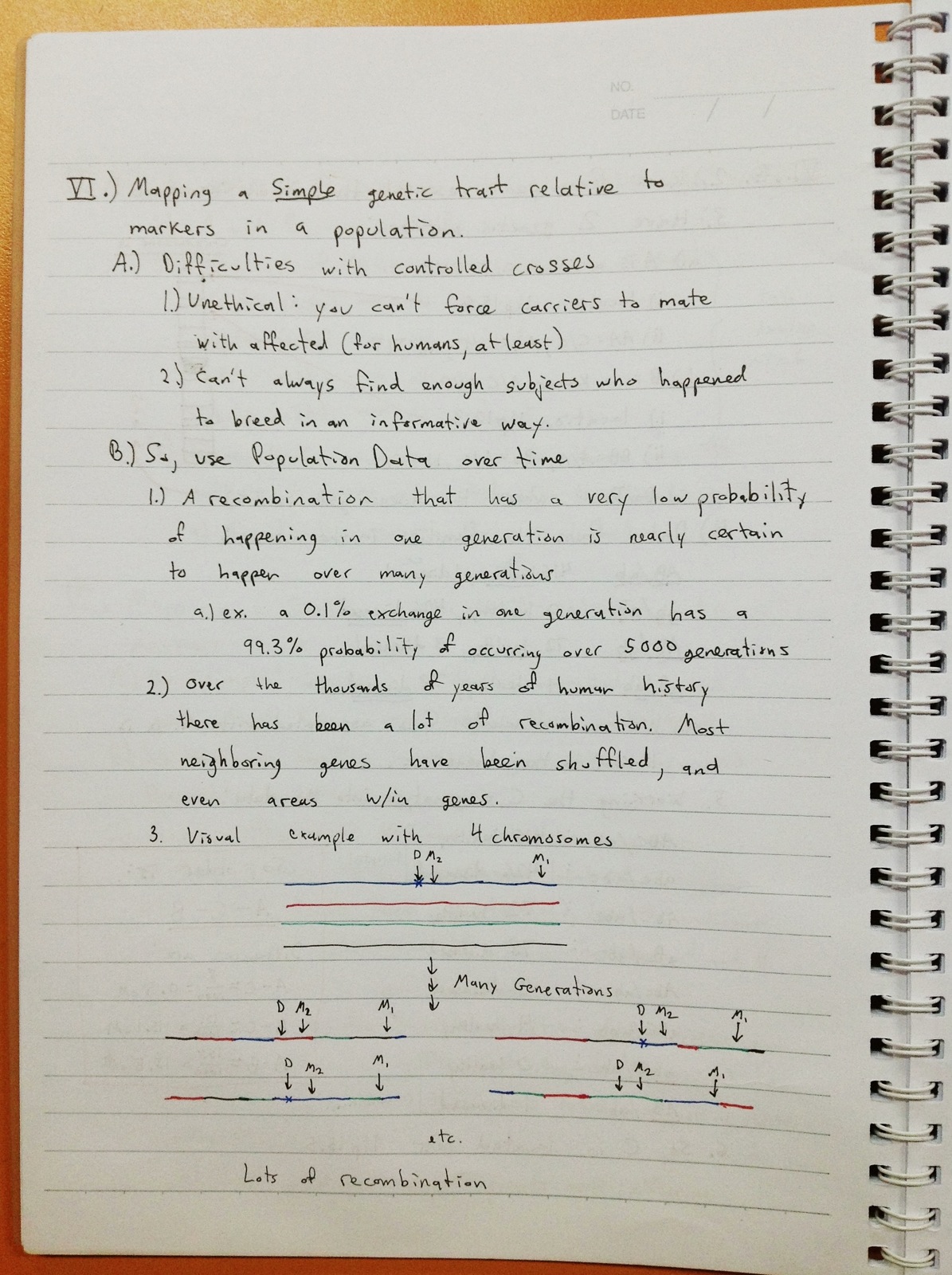This week was all about the very basics of population genetics and Hardy-Weinberg Equilibrium (and some deviations thereof). Good stuff.
There was a really good post in the forums for this course on Coursera that basically proved algebraically that combining two populations, each at Hardy-Weinberg Equilibrium but with different allele frequences, will ALWAYS result in a lower than expected heterozygote frequency. I'll see about getting permission to repost it and either edit it into this post or give it its own post. It was pretty cool. :)
18 February 2013
Intro. to Genetics and Evolution Week 5 Notes
This week saw the basics of heritability, population growth, and carrying capacity. Granted, the basic math we used here was not hard, I really need to brush up on my Statistics to better understand the underlying basis to the math we talked about.
This brought us up to the Midterm exam, about which I will say nothing except I felt the questions did a good job putting everything together. :)
This brought us up to the Midterm exam, about which I will say nothing except I felt the questions did a good job putting everything together. :)
Into. to Genetics and Evolution Week 4 Notes
This week covered some basics about mutations and mutation rates, as well as how we attempt to map complex traits, such as polygenetic traits. Not so different from mapping simple traits, except looking all across the genome at rather weak signals for association.
One thing I just want to point out about this week's lectures: Dr. Noor's explanation for why there would be a normal distribution is one of the clearest explanations of the normal distribution I've ever heard. Again, an obvious idea in hindsight, but never explained so clearly to me. It's in the 3rd page of notes. :)
One thing I just want to point out about this week's lectures: Dr. Noor's explanation for why there would be a normal distribution is one of the clearest explanations of the normal distribution I've ever heard. Again, an obvious idea in hindsight, but never explained so clearly to me. It's in the 3rd page of notes. :)
Intro. to Genetics and Evolution Week 3 Notes
This week's topics were all about recombination and genetic mapping. There's quite a bit here, as a lot of it was new to me and the ideas are pretty cool. I can't help but think, "why the hell did I never learn any of this in my university genetics class???" Granted some of the ideas, such as those involving SNPs were only possible after the human genome project (which wasn't complete until after I'd graduated), but still. There's a lot of stuff about linkage and recombination fractions that should have been covered.
However, I have independent confirmation that my university genetics class was pants. So, it's not just a matter of me not having paid attention. ;)
There's a lot of good stuff here. Some of it kind of mind-blowing, and I'm really glad I'm learning it, even if I should have learned at least some of it before. Notice the marked increase in note-taking. ;)
However, I have independent confirmation that my university genetics class was pants. So, it's not just a matter of me not having paid attention. ;)
There's a lot of good stuff here. Some of it kind of mind-blowing, and I'm really glad I'm learning it, even if I should have learned at least some of it before. Notice the marked increase in note-taking. ;)
Intro. to Genetics and Evolution Week 2 Notes
Oops. I've been taking Dr. Mohammed Noor's "Introduction to Genetics and Evolution" course on Coursera. I was supposed to have been posting these as I went along in the course, but here we are 6 weeks in, and I'm only just now getting around to it. No notes from the first week, as it was all introductory material with which I'm already familiar.
These week 2 notes are rather sparse as well, but there was at least one new thing to learn.
I can't believe a.) that I'd never been taught that you could simply multiply monohybrid probabilities for each gene in a dihybrid (or presumably any number of traits) cross, and b.) it never even occurred to me that this could be done, as it seems really obvious in hindsight. Ah well, now I know it and can pass it on to my high school students next year. :)
These week 2 notes are rather sparse as well, but there was at least one new thing to learn.
I can't believe a.) that I'd never been taught that you could simply multiply monohybrid probabilities for each gene in a dihybrid (or presumably any number of traits) cross, and b.) it never even occurred to me that this could be done, as it seems really obvious in hindsight. Ah well, now I know it and can pass it on to my high school students next year. :)
Subscribe to:
Comments (Atom)

















































